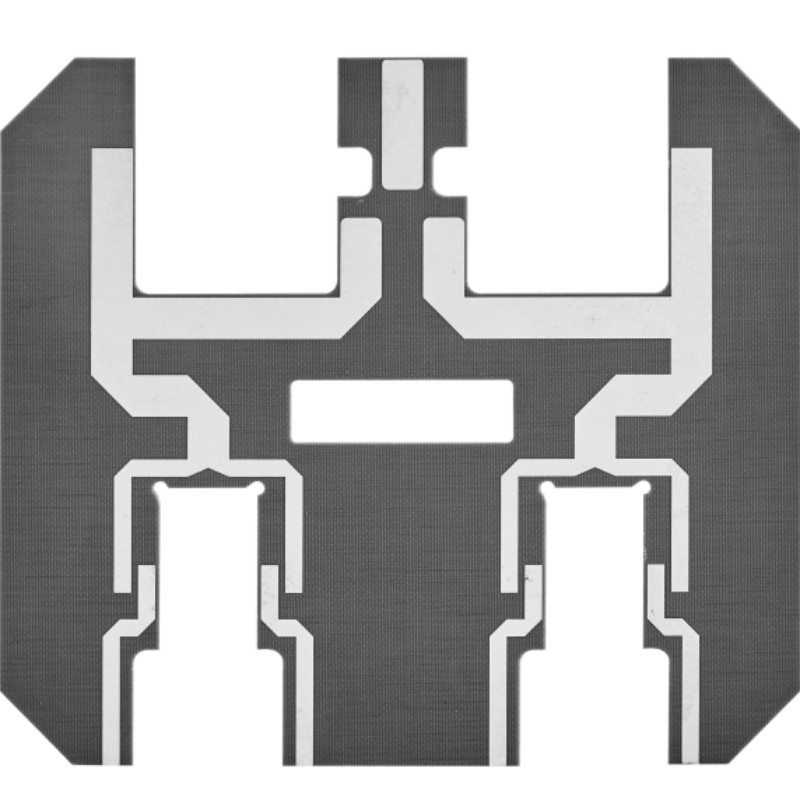The Copper Clad Stretch (CCS) flexible printed circuit technology developed by Panasonic can be stretched, unlike conventional copper clad laminates (CCLs). The same resin system is used for both the circuitry layer and the insulative coverlay.
The coverlay construction consists of a PET protective film, uncured resin, and polyimide release liner says Kyosuke Michigami of Panasonic Industry. This uses a new thermosetting polymer that can be used in both fully-cured and un-cured format depending on the application and the polyimide release liner in the coverlay also acts as a mechanical support for the soft circuit board during SMT process. Prototype Board Pcb

A 10%-stretch cycle test for 10,000 cycles was conducted using a serpentine-patterned CCS. The sample finished the test without any failures in copper pattern, showing that CCS has durability for stretch and is suitable for application requiring movements.
Researchers at Osaka University used the CCS approach for a reconfigurable intelligent surface (RIS) to deliver the radio waves in the 140GHz bands that may be used for future 6G services. The radio waves at these frequencies are easily blocked by buildings and other physical structures so the researchers fabricated a metasurface reflector that can be attached to various locations and whose angle can be adjusted by expanding and contracting. By the combining a metasurface pattern and the inherent stretchability of CCS, it is possible to reflect radio waves efficiently.
Both Toppan and Kyocera in Japan have been developing similar RIS metamaterial designs for 6G applications.
Conventional flexible printed circuits consist of copper patterns formed on the surface of a flexible film using standard subtractive printed circuit board fabrication processes. Historically, polyimide resin (PI) has been widely used because it is readily available and possesses heat-resistant properties which make it compatible with high-volume assembly processes like solder reflow. However, new applications and device designs like wearables are driving the development of more conformable circuits. Stiff, high-modulus films such as polyimide are not suitable for these products.
Currently available pliable, low modulus films such as thermoplastic polyurethane (TPU) are not compatible with conventional surface mount (SMT) assembly processes. Researchers at Panasonic Electronic Materials are developing a new material technology that overcomes the limitations of these conventional FPCs.
The resin of CCS is much more pliable than polyimide, leading to accommodation of various device form factors such as twisting and bending (Fig.4). Therefore, it is well-suited for non-planar and dynamic applications in healthcare, wearables
Assuming exposure to typical SAC (Tin-Silver-Copper alloy) reflow conditions in the SMT process, the researchers conducted a solder float test at 288°C for 10 seconds and confirmed that no blistering or delamination of the CCS occurred. The bare film made by etching CCS showed pliability and stretchability even after the solder float while the thermoplastic TPU resin melted almost instantaneously and turned out to be incompatible with this SMT process.
CCS was also evaluated for standard PCB double-sided processes compatibility which consist of mechanical drilling, wet desmear, plating, chemical etching, coverlay patterning-molding, and surface mounting technology (SMT). The CCS could pass through the process. The polyimide release liner in the coverlay acted as a support structure for avoiding deformation during SMT.
Multilayer PCB material boost for network equipment

Printed Circuit Board Technology All material on this site Copyright © 2022 European Business Press SA. All rights reserved.